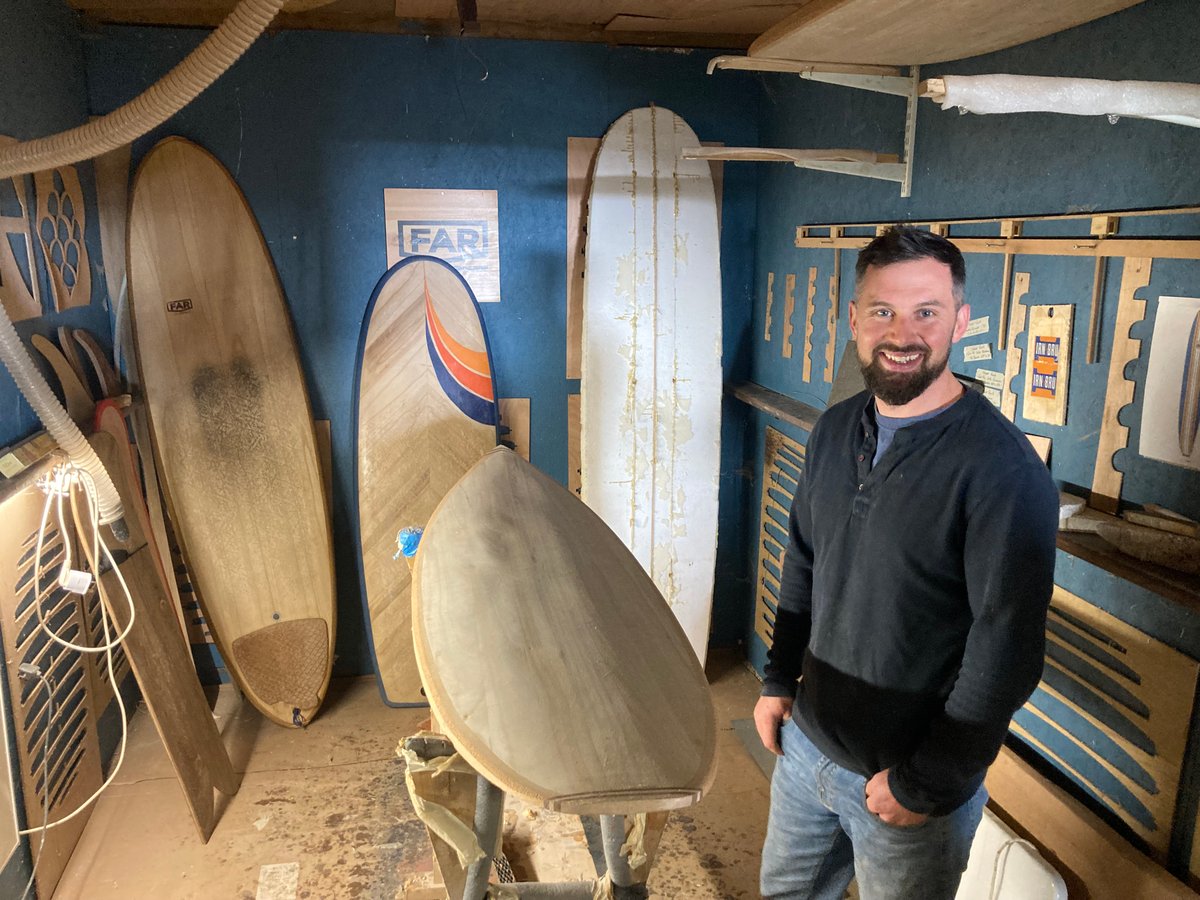By Roger Cox and Outdoors Columnist,Roger Cox, Outdoors Columnist
Copyright scotsman

In his workshop in a converted steading just outside Crail, wooden surfboard builder Frazer Reid is casting a critical eye over the first board he ever made. Suspended from the ceiling alongside another early project, it’s a beautiful thing to look at, the wood still glowing under the varnish, but as far as Reid is concerned it’s a flawed experiment at best. “I probably wouldn’t surf that board any more,” he says. “Looking at the shape of it, that one’s a bit too fat and chunky – everything’s a lot more refined now. But it was still an amazing experience to build your own board for the first time and then have it work.” Since he first started making wooden boards more than a decade ago, Reid’s quest for refinement has taken him in all kinds of interesting directions. Hanging on the wall just beside the door is an elegant nine-foot single-fin longboard that wouldn’t have looked out of place in early 1960s California; meanwhile over in the shaping bay at the back of the workshop, where Reid sculpts the all-important contours of his creations, there’s a beautiful little board, modelled on a design known as a Simmons Spoon, with a rounded nose and a wide, flat tail. It’s barely five feet long but built with plenty of volume for easy paddling, while its two keel-shaped fins whisper a promise of effortless down-the-line speed. Most modern surfboards are, to put it kindly, environmentally problematic, with cores made out of EPS or polyurethane foam coated in fibreglass cloth and either epoxy or polyester resin, none of which is easy to recycle. The industry has been trying to green up its act in recent years, but there’s still a long way to go. In the meantime, wooden surfboards – built from a sustainable resource, easily recyclable and 100 per cent biodegradable – have been growing in popularity, although they still represent just a tiny fraction of the overall market. READ MORE: Surfing: Phoebe Strachan on leading Team Scotland to their best ever result at Eurosurf Still, there’s plenty of love for them among the cognoscenti, and this weekend at Lost Shore surf resort just outside Edinburgh some of the leading practitioners in the field, including Reid, will gather for the The European Wooden Surfboard Meet 2025 to share ideas, showcase designs and take part in a couple of special, “wooden surfboards only” sessions in the wave pool. Now 34, Reid grew up near St Andrews and took up surfing just after leaving school. At the age of 21, he started a furniture-making course at the Chippendale School of Furniture at Haddington and made his first wooden surfboard at 22. “I was halfway through my woodworking year and I’d seen a picture of a wooden surfboard online and I just thought, ‘OK let’s try that,’” he says. “It turned out my Easter break coincided with a boatbuilder down in London doing a wooden board building course, so I went down for that – and I’ve just continued making boards and furniture ever since.” As the name of his business suggests, from his FAR Cabinet Makers and Wooden Surfboards workshop Reid makes a mixture of furniture and boards. Sometimes, like last year, he makes more boards than furniture; in other years it might be the other way around. READ MORE: Top Scots surf photographers tell the stories behind their best shots For most of his board-building career, Reid has specialised in making hollow surfboards entirely out of wood, with an internal skeleton of struts providing rigidity beneath a thin outer shell. More recently, however, he has also started to look at ways of using his woodworking expertise to take battered, ready-to-retire “soft-top” beginner surfboards, also known as “foamies” – boards which would otherwise be destined for landfill – and give them a new lease of life. It’s an ingenious form of upcycling, but also a labour intensive one. “When you cut apart an old foamie, they have three plywood stringers in them,” he says – stringers being wooden strips that run through the middle of the board, giving it strength. “But the wood they’re made out of is like packing ply, it’s absolutely awful – they just soak the water in and become rotten. So, in order to make the foam core of the board useable, you have to strip all the foam and plastic off the outside, cut the stringers out and re-glue it, and then you need to put a new stringer in the middle for some added strength.” Once all that’s been done, Reid is able to shape a new surfboard from the re-engineered core, to which he adds wooden sheets top and bottom and cork along the rails. Cork, it turns out, is a wonderful material for surfboards. He shows me a board of his with cork rails where he was able to simply cut out a damaged section, glue in a new piece of cork, then sand and varnish over the top. Or, at least, he tries to show me – the repair is so close to invisible it takes the pair of us a couple of minutes to find it. READ MORE: Stephen Spencer on biking 1,000 miles for The Wave Project: ‘these volunteers make magic happen’ Meanwhile, Reid’s repurposed foamies are proving extremely durable – indeed, the first one he made a few years back is still going strong. “I made one for my friend out of an old board from the University of St Andrews Surf Club,” he says. “They had a stack of them lying outside that had just been there for years in the rain, so I brought one of those up here, cut it apart, re-glued it and dried the foam out and shaped him a six-foot fish. That was a few years ago and if anyone was going to trash it it was going to be him, because he just throws boards around. But it’s still one of his favourite boards – I’ve got to the point where I’m kinda sick of him sending me texts going ‘Hey, I’ve just had another great surf on your little fish’ while I’m still stuck here at work.” For more on Frazer Reid and FAR Surfboards, visit www.farcabinetmakers.co.uk For more on the European Wooden Surfboard Meet 2025 visit www.lostshore.com/whats-on



